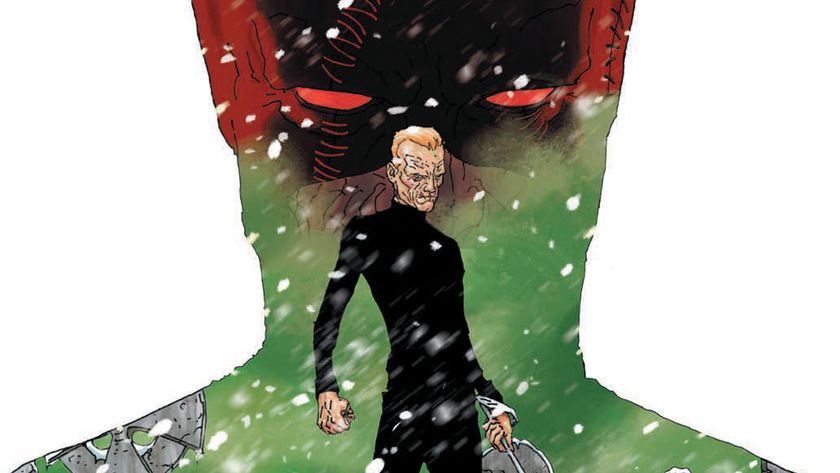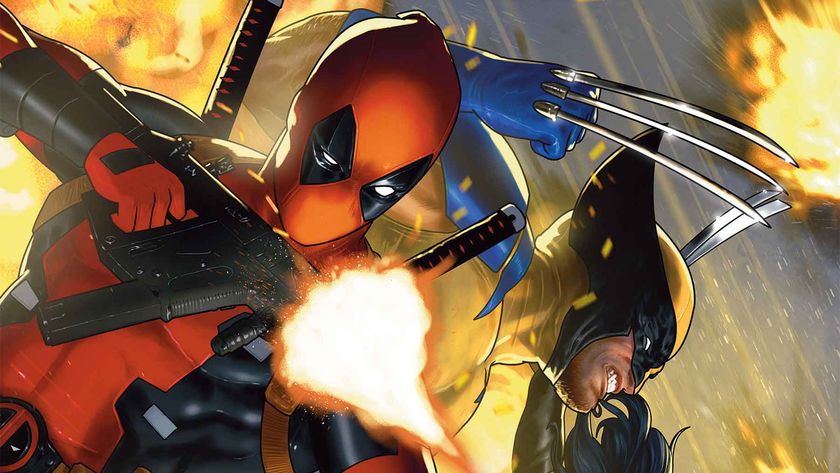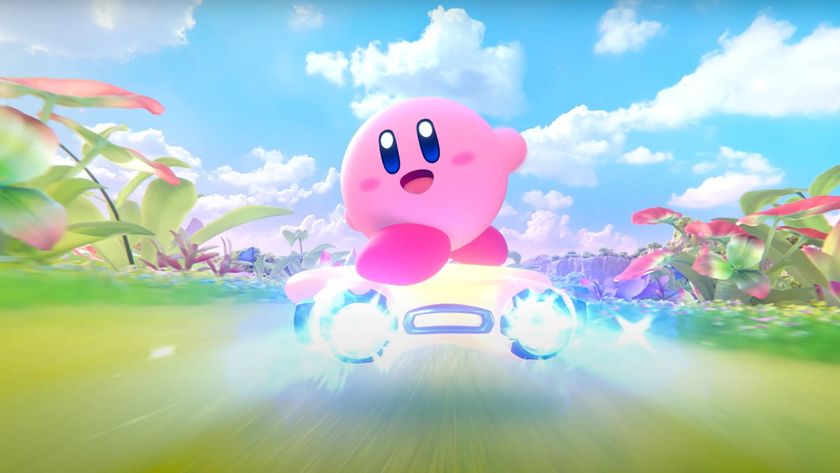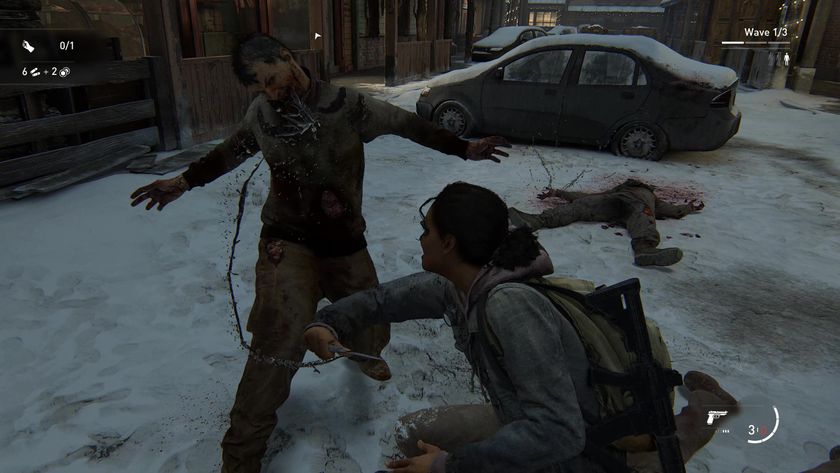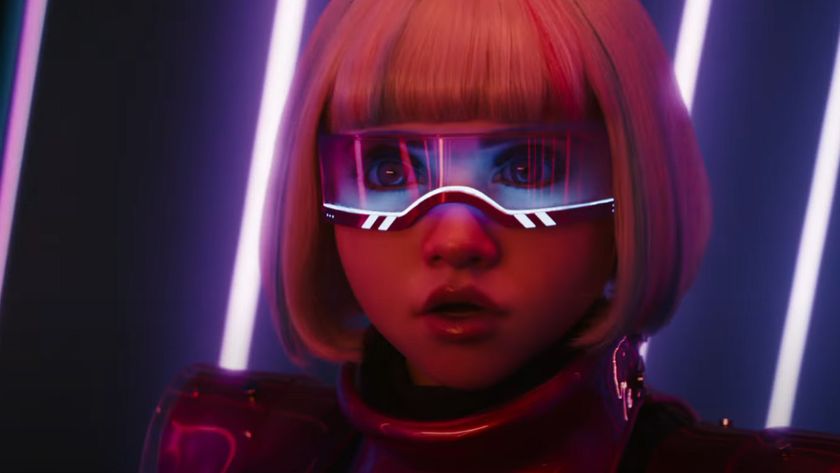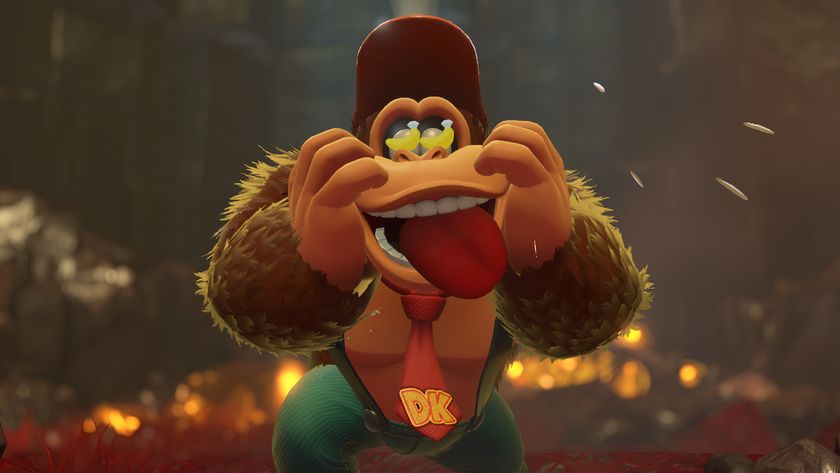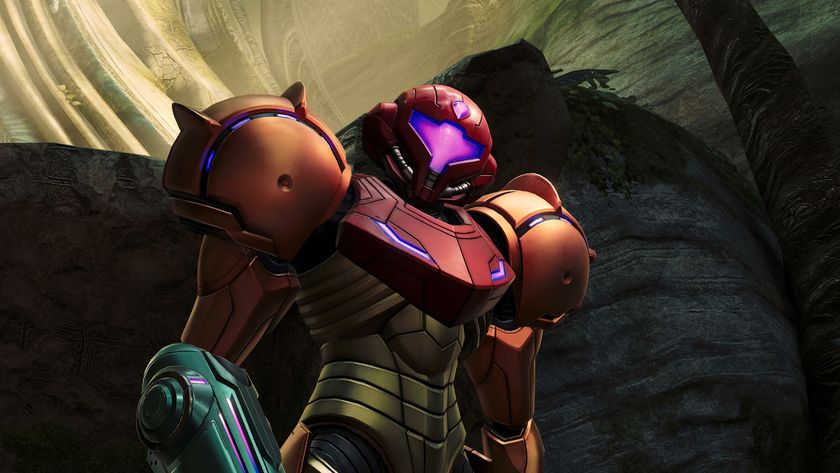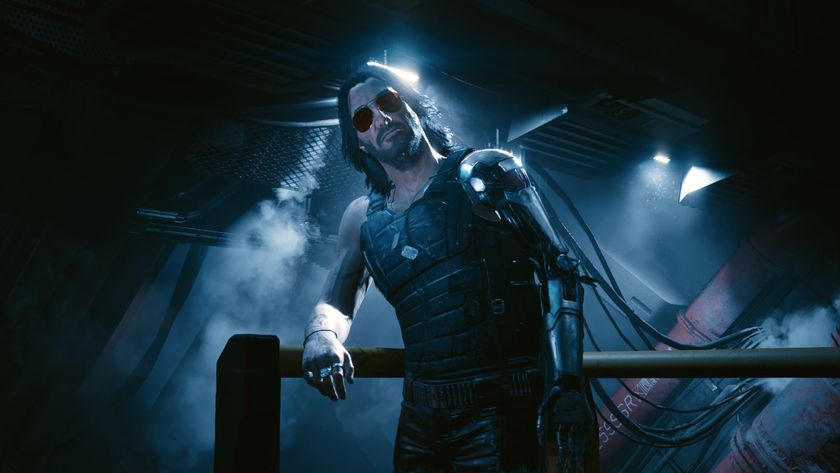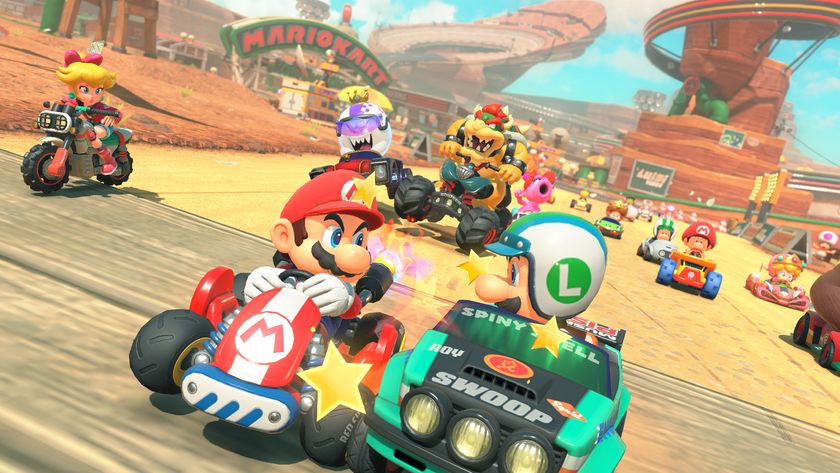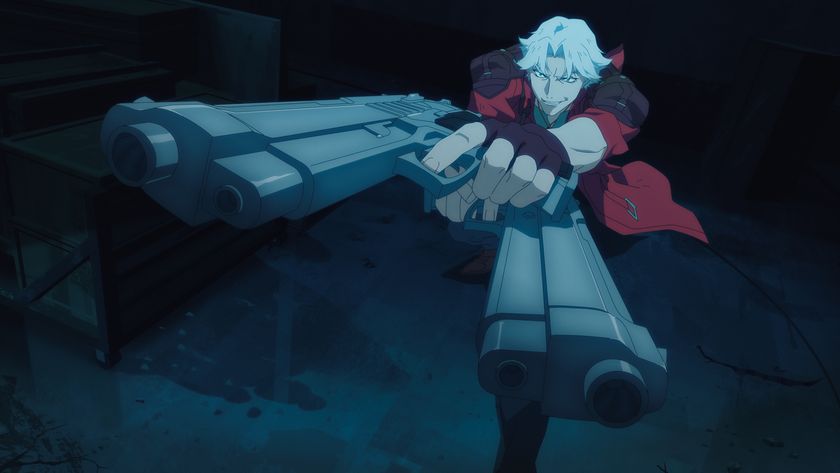Barry Allen as Mad Max and Batman heats up The Flash #784
'Flash of Three Worlds' dives into the DC Omniverse in Flash #784 and writer Jeremy Adams and artist Amancay Nahuelpan are our guides

'The Search for Barry Allen' is on.
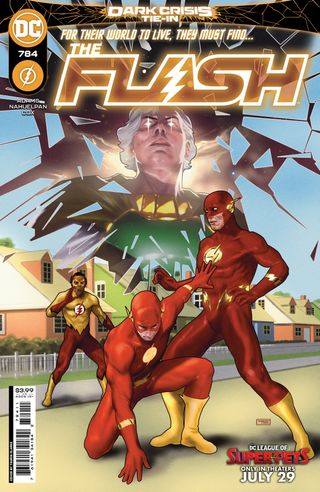
Spinning out of the events of Dark Crisis, the latest arc of The Flash sees a host of speedsters, including Wally West, Jay Garrick, Jesse Quick, and more, on a mission to locate their missing comrade. To do so, they'll have to hop between three alternate realities, each with its own Barry Allen, but only one with the 'real' one they need.
The second chapter of the arc, Flash #784, hit shelves on July 19. To mark the occasion, Newsarama sat down with writer Jeremy Adams and artist Amancay Nahuelpan to chat about 'The Search for Barry Allen,' the worlds it spans, and the characters that live in them. Read on for more.
Grant DeArmitt for Newsarama: Amancay, you have a talent for world-building; not just in this book but in Crash and Lobo, which you did with Mariko Tamaki. Those alien worlds are so weird and immersive. Can you just talk to me about how you do that? What is your world-building process?
Jeremy Adams: Don't say drugs! Don't say drugs.
Nrama: Or at least say which drugs.
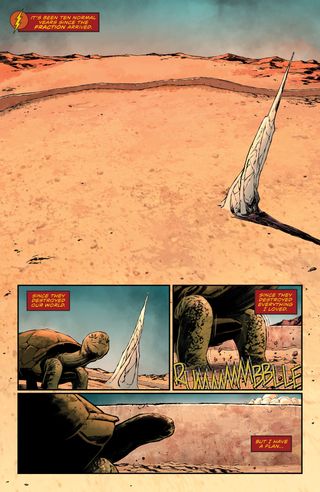
Amancay Nahuelpan: [laughs] No, no. I just love drawing backgrounds. I get really inspired by movies I've seen or places you've been or whatever and you start building it and putting it down on the page. I got the script for [Flash] #783 and it mentioned this type of 'Mad Max' world. Being a Mad Max fan, I was like, 'Okay,' We have a lot of desert, a bunch of cars, and this Spire that shows up later on.' All that stuff gives this kind of isolated or desolated scenario.
Comic deals, prizes and latest news
Get the best comic news, insights, opinions, analysis and more!
But we have these other ingredients that form this world, that build it and all that. It's something that I love to do, I love building worlds and creating backgrounds and stuff that helps bring up the bigger picture of what the story is going to tell and, hopefully, make it fun for the readers.
Every background, every world, is part of a character. It's as important as the characters are for the story. So for me, it's always really important to have that settled down for the reader, to know that this world is going to be as important as our characters.
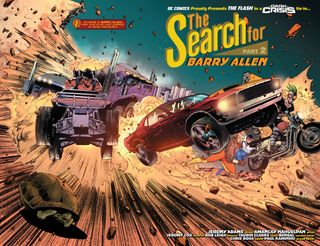
Nrama: I love that idea, that of an environment that supports a character. That's really cool. Jeremy, how much of the three worlds in this series was your choice? Did DC say they needed them for this Dark Crisis tie-in?
Adams: Oh, no. I don't talk to DC.
[laughs]
I just wanted to make three distinct environments. I've said this before, but one of the things that I love about Star Wars and Indiana Jones is that you go to different environments. You're juxtaposing those different environments with the different stories, which helps separate them a little bit for the reader.
So I knew that I wanted to do a 'Mad Max' world because I was excited about Barry Allen as Mad Max. There's something really cool about that idea. Then there's a Barry Allen Batman…
Nrama: Can't wait to talk about that.
Adams: Right, I just kind of like that all these are variations on a theme. They're all very jazz. And then we already knew what the final [world] was, because Josh Williamson put Barry Allen in that kind of dream thing, that idealized, Silver Age dream-state that Barry is in.
Getting those pages back, I was struck by how distinct the environments were, which is insane because it's the same artist. It's three different dialects and you're like, 'Oh, it could very well be three different artists.' When I first started writing Flash, we would do this flashback stuff, where Wally would be in one story and then we'd flashback to the lab. We had different artists doing those segments, which became very laborious. For Amancay to be able to do this to be the same artist is quite a feat. It's quite remarkable.
Nrama: That really is mind-blowing, Amancay. On that subject, I want to talk about the Silver Age world Jeremy mentioned. How do you do that aesthetic? How do you make it so obviously Silver age from beat one?
Nahuelpan: Because I work digitally, I change the brush I use for inking those pages. I use different techniques to make it look opposite to what I usually draw. I did read through a lot of older styles. José Luis García-López was one of the big influences. A lot of that '70s, '80s stuff, everything that came out with those printed dots on the color. It was like a lot of fun going back to all those older issues.
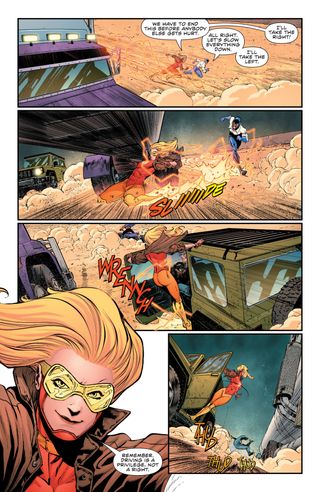
It's funny, it's kind of a different muscle. At the beginning, when I was working on these pages, I felt like they were too empty. For example, in #783, there's a kitchen scene with a bunch of picture frames hanging on the wall. Back in the Silver Age era, they wouldn't add drawings into the frames. They would just put a square there and whatever. I tried to copy that same style, but it felt like I was missing some detail. I had to force myself not to do more details because that wouldn't look Silver Age. I also would try to keep away from dark shadows.
So in the beginning, it was a challenge. I was like forcing myself to draw differently. But once I got comfortable with that style, okay with this looking "unfinished," I was like, 'Okay, I can go ahead and work on the style in a more comfortable way.' But then, I reached a point where I was super comfortable drawing on this level, and switching back to my regular style was kind of like a challenge as well. [laughs] I had to add all those details!
Nrama: Going back really quickly to older comics; I interviewed Joshua Williamson recently, who said Dark Crisis is very much a sequel to Crisis on Infinite Earths. And I was wondering, Jeremy, is there a similar relationship between this book and The Search for Ray Palmer? That story was all about heroes hopping across multiverses.
Adams: Maybe. It wasn't intentional. Odds are that Josh, who is sitting there like a chess player, probably was like, 'We need one of these.' I can totally see him doing that. But all I heard was, 'You've got three issues to find Barry Allen.' I was like, 'Okay, let's go.'
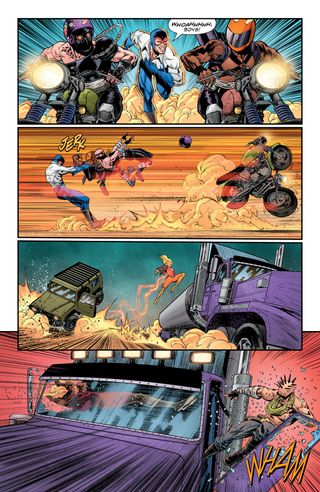
Nrama: Understood. Alright, everybody's been talking about the combination Batman/Flash, who is called Night-Flash, and whom we meet in this issue. Amancay, I'm looking at Night-Flash, and obviously, I'm seeing a combination of Batman and Flash. But then in the cape especially, and sometimes in the movement, I'm getting a lot of Spawn. Is that intentional?
Nahuelpan: Actually, in the script, Jeremy described the cape as a very Spawn-like thing. And there's a lot of Kelly Jones in there as well. He was a big influence; I grew up reading a lot of his Batman. So spawn and Kelly Jones are definitely the ingredients for coming up with Night-Flash's cape and look.
Nrama: Yeah, the exaggerated cape is very Kelly Jones. I definitely got that.
Adams: Right, and because it's a speedster, it's really cool. Like, he can go so fast and this thing unfurls behind him.
Nahuelpan: And the fact that the cape looks a little bit like a Spawn cape, which is a cape that has a mind of its own, is really necessary. Because when he's running fast, it could get tangled everywhere.
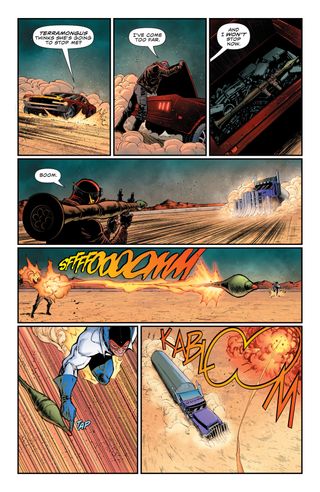
Nrama: Ok, wrapping up here. If DC were to say, 'Here's all the money and time you want, give us a series set in one of these three worlds,' which would you pick, why would you pick it, and how would it start?
Adams: I mean, because Amancay is so excited about the 'Mad Max' world, that's probably the one that I would want to do. With Flashpoint Beyond, I'm in that darker, Batman space already, so I don't necessarily think that's what I'd want to do. I love the Silver Age stuff, but that's a product of Dark Crisis.
The idea of what's happening with the 'Mad Max' world, the actual story of what's happening there, hints at something that's going to happen in The Flash book. It's going to be a very big part of The Flash book later on. But yeah, I would love to do something in that apocalyptic world. That would be interesting.
Nahuelpan: Yeah, I've joked with Jeremy that if there's ever a mini-series, I'm down. I see so much potential in just these few pages we've done here. The amount of ideas that show up when I'm drawing these things… there are infinite possibilities for what can be done if this can be like a Mad Max, Indiana Jones kind of story. You know, Barry searching around in his car, it's definitely a world that I would love to explore more.
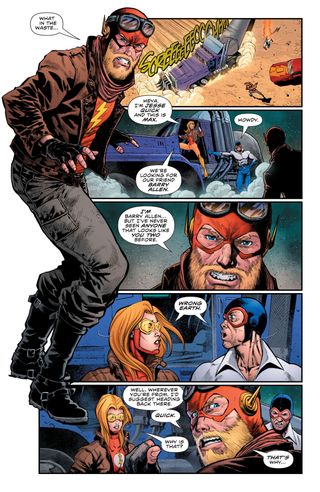
Nrama: It does feel so rich. All three of these worlds feel so rich, it's almost a bummer this story is going to wrap up next issue. I'm sure people would love to see more of it. Fans seem to be loving this.
Adams: Thank you, I've been really thrilled about people's responses. Amancay's art has really showcased and drawn attention to the book. I've been overwhelmed with everybody's love regarding the book, and that's all I want. So huge props to Amancay for bringing those eyeballs.
Nahuelpan: From my side, I've been having so much fun working on this and that's all thanks to Jeremy. This is going to turn into, uh…
Adams: "You're the best!" "No, you're the best!"
Nahuelpan: It does just feel like I'm drawing a classic superhero comic book. And that's exactly what I wanted. I hope people enjoy it, I hope people enjoy what they're reading and what they're looking at.
Nrama: I'm sure they do.
Speed your way through the best Flash stories of all time.

Grant DeArmitt is a NYC-based writer and editor who regularly contributes bylines to Newsarama. Grant is a horror aficionado, writing about the genre for Nightmare on Film Street, and has written features, reviews, and interviews for the likes of PanelxPanel and Monkeys Fighting Robots. Grant says he probably isn't a werewolf… but you can never be too careful.
